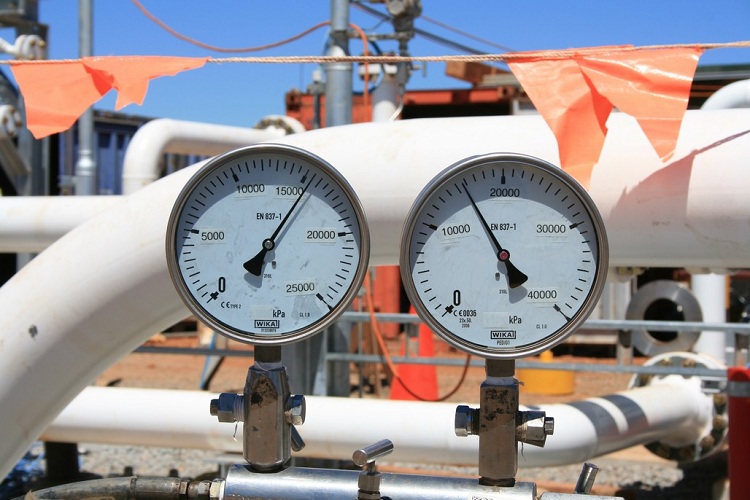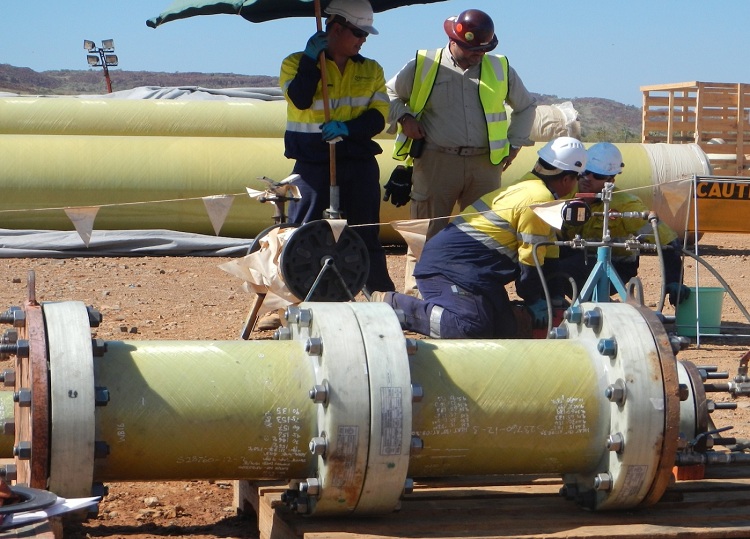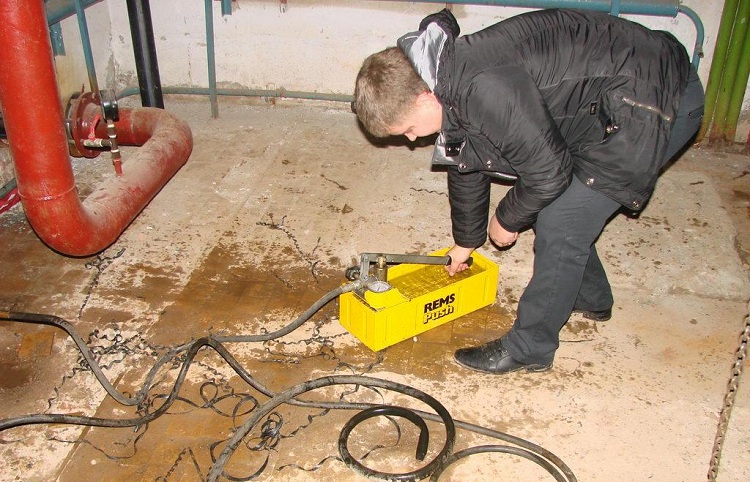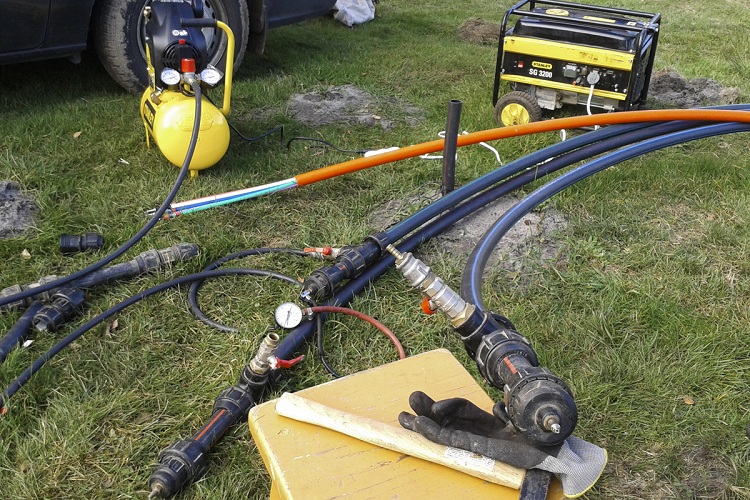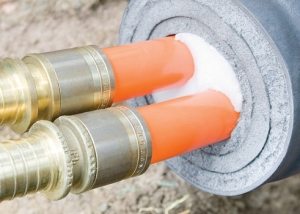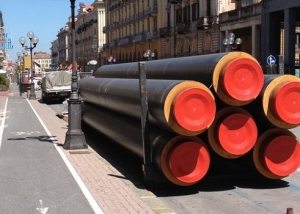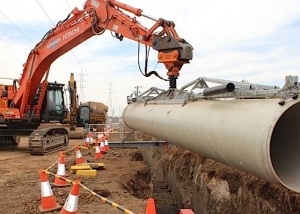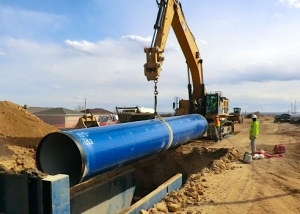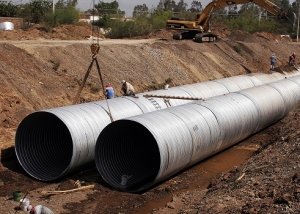Hydraulic testing of pipelines is a set of measures that can be carried out at different stages of pipeline operation, but most often these tests are carried out immediately after laying the communication, before it is launched. Networks that operate under pressure must be checked (in accordance with the provisions of SNiP) for various defects. This is necessary in order to prevent the occurrence of an emergency.

Hydraulic tests are a check of a condition and operability of the highway with the pressure exceeding working
Content
- 1 Why are hydraulic tests carried out?
- 2 Features of hydraulic tests
- 3 In what conditions is it necessary to carry out a hydraulic check of pipelines?
- 4 Work sequence
- 5 Preparatory work
- 6 Strength and Leak Testing
- 7 Determination of additional volume of water
- 8 Drawing up an act
- 9 Tests of the internal fire water supply
- 10 Water Testing
- 11 Testing heating systems
Why are hydraulic tests carried out?
During hydraulic tests, the strength and tightness of the structure are determined, and its volume is also determined. All types of pipelines undergo such checks at different operational stages.
There are three options when hydraulic checks are carried out without fail, regardless of the direction of communication:
- during the production of pipes, a quality check is mandatory. Other components for pipelines also undergo appropriate tests;
- after installation of the pipeline structure, appropriate tests are also carried out, checking the communication for operability;
- Pipeline testing is also performed during preventive maintenance.
Such tests are able to identify certain discrepancies in the pipes or their components with the quality standards prescribed in the laws. Conducting verification activities is a necessary point of operation of equipment operating under pressure.
As a rule, the verification procedure includes several important points. For hydraulic testing, extreme conditions are created to accurately determine the reliability of the pipeline. In this case, the test pressure may be 1.25–1.5 times greater than usual.
Features of hydraulic tests
Test pressure is pumped into the pipeline slowly and smoothly so as not to cause a water hammer or create another emergency. Pressure indicators, as mentioned above, exceed standard operating standards.
The force of fluid supply is fixed on measuring instruments (manometers), therefore, it is possible to monitor and regulate the process. According to SNiP, the fluid supply is accompanied by an accumulation of gas at different points of communication. This is a very important point that must be controlled to avoid unforeseen situations.
After filling the pipeline structure with water, the equipment is under increased, test pressure. This period is called the exposure time.
Important! There is one important rule - during the exposure of the equipment, it is necessary to exclude the possibility of jumps in the test pressure. The test pressure must be constant.
At the end of the exposure, work is carried out to reduce the pressure to normal indicators. During the test, it is forbidden to be anyone in the immediate vicinity of the tested pipeline. Workers are located in a safe place.
When the hydraulic test is carried out, the communication is inspected for damage and the information received is evaluated in accordance with SNiP.
In what conditions is it necessary to carry out a hydraulic check of pipelines?
Hydraulic testing of pipelines are complex activities that require some preparation. The tests must comply with building codes and rules, therefore, such checks are carried out only by highly qualified specialists.
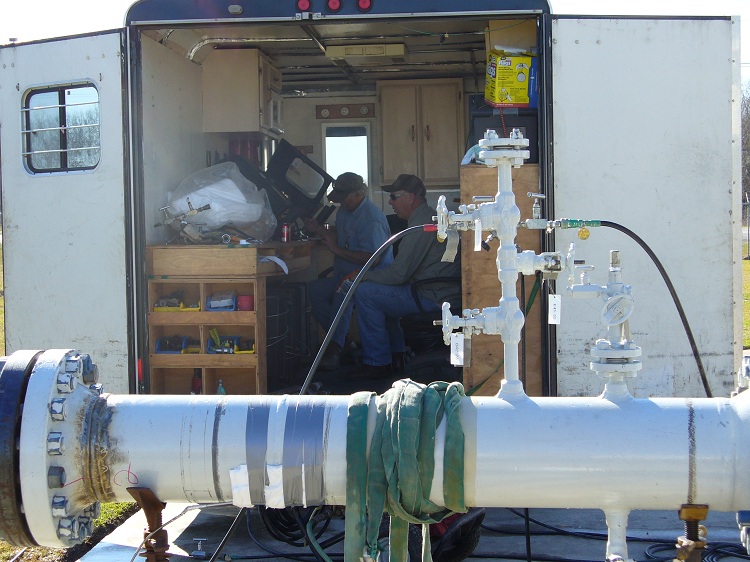
Tests are carried out strictly according to the accepted norms and rules and experts process the process.
To conduct such a pipeline inspection, the following conditions must be adhered to:
- points of use in the riser are activated simultaneously for testing, however, this position is not always mandatory and is determined individually depending on the specific case;
- the characteristics of towel dryers are checked when testing hot water systems;
- temperature measurements are carried out only at the extreme points in the structure;
- after testing, it is necessary to completely remove water from the system;
- communication is filled upwards. Such a rule is necessary for proper air displacement and avoids emergency situations associated with an excess of pressure, as well as air congestion.
- the initial stage of filling communication refers only to the main riser, and only at the next stages is the filling of risers branching from the main.
- during hydraulic tests, the ambient temperature shall not be lower than +5 ° C.
These conditions must be met regardless of the type of pipeline and the medium it is transporting.
Hydraulic checks are carried out for the following equipment:
- domestic fire water pipes;
- hot and cold water supply systems;
- heating systems.
Work sequence
Measures for hydraulic inspection are carried out in a certain sequence. Consider the main stages of this process:
- Pipe network cleaning.
- Installation of cranes, plugs and measuring equipment (pressure gauges).
- Connection of water and a hydraulic press.
- Filling the communication with water to the desired level.
- Checking the pipeline structure for damage (deformed places are marked).
- Repair problem areas.
- Retesting.
- Disconnect from the pipeline and remove fluid from the system.
- Dismantling of taps, plugs and manometers.
All these manipulations must be carried out in accordance with building codes and rules in order to eliminate negligence and emergency situations.
Preparatory work
Before conducting hydraulic tests, a number of preparatory steps must be completed. Consider the sequence of preparatory work:
- The pipeline is divided into conventional parts.
- A superficial visual inspection of the communication is performed.
- Checks technical documentation.
- On the structure are fixed in (places of conditional divisions) valves, as well as the necessary plugs.
- Temporary communication is attached to the pressing apparatus and fillers.
- The test site is disconnected from the highway and equipped with the necessary valves (plugs).
- Next, the test segment of the pipeline is disconnected from the equipment.
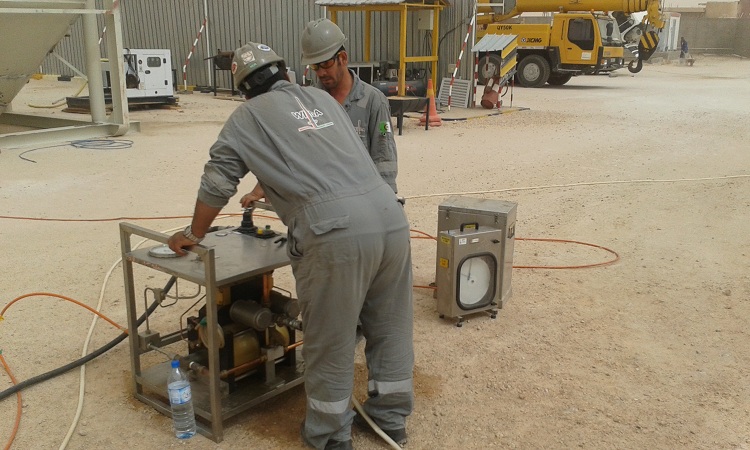
For work, use equipment to increase the pressure in the pipes - pumps, compressors and other devices
Important! It is strictly forbidden to equip the tested communication section with shutoff valves of the same pipeline.
To check the strength indicators of the pipeline structure, it is connected to various hydraulic equipment (compressors, pumping stations, etc.), which is able to create the necessary pressure in the pipeline at a distance of two valves.
Strength and Leak Testing
A preliminary test of communication for strength and tightness indicators is carried out in the following sequence:
Strength check. To do this, create a check, increased pressure in the pipeline and maintain it for about 10 minutes. As mentioned above, during exposure it is impossible to allow the pressure to drop. As a rule, the check is violated if the pressure drops by more than 0.1 MPa. At the end of time, the test pressure is reduced to standard values and maintained by continuous pumping of liquid. After this, an inspection of the structure is carried out, which is aimed at identifying damage. If no defects are found, a second strength test is performed. If deformations are detected in the pipeline structure, they are eliminated and a second test is carried out. Individual parts of pipeline communication are checked at different times. The duration of the hydraulic check cannot be less than 10 minutes.
Check for leaks. After the communication has passed the strength test, a leak test of the pipeline is performed. The tightness is checked as follows:
- The start time of the check is fixed.
- In the measuring tank, the initial fluid level is determined.
- When the first two points are completed, begins to observe a decrease in pressure in the structure.
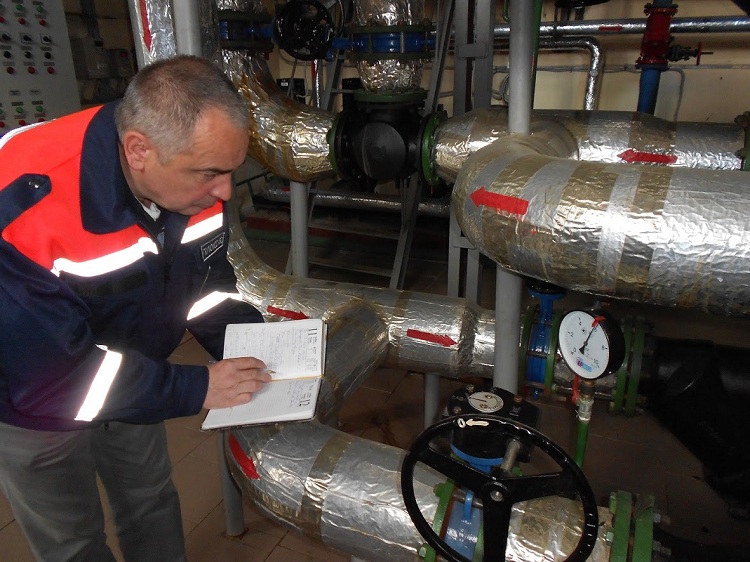
During the test, strict pressure control is necessary, its indicator should not change throughout the exposure period
In hydraulic piping tests, this sequence must be strictly followed.
Determination of additional volume of water
After performing a leak test, as a rule, the calculation of the additional volume of liquid in the system follows. This process takes place in the following sequence:
- The pressure level in the structure is again increased due to pumping fluid from the measuring tank. The pressure indicator should be the same as during the hydraulic check, that is, exceed the standard indicators by 1.25–1.5 times.
- The time when the leak test is over must be remembered.
- At the third stage, the final water level is measured in the measuring tank.
- Next, the time period that the communication check took (in minutes) is determined.
- Calculation of the volume of fluid pumped from the measuring tank (for 1 case).
- Calculating the difference between the pumped-in fluid and the fluid removed from the pipeline (for 2 cases).
- Calculation of the actual waste of additionally pumped liquid by the formula: qn = Q / (Tk-Tn).
Drawing up an act
After conducting hydraulic tests, it is necessary to draw up an act indicating that the inspections took place taking into account building norms and rules, as well as containing a report that the pipeline structure withstood them. This document is compiled by the inspector.
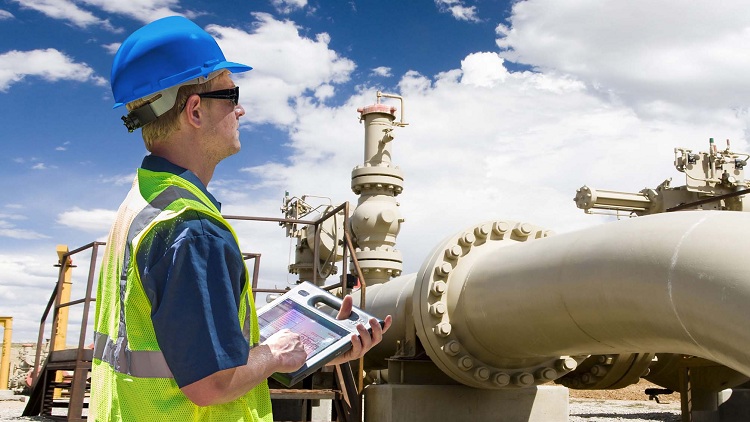
According to the test results, an act is drawn up that confirms the serviceability of the pipeline and the safety of its operation
The act, without fail, must include the following items:
- name of the pipeline;
- name of the company that provides technical supervision;
- necessary data describing the test pressure and test duration;
- pressure reduction data;
- a description of the defects identified during the inspection or a record of their absence.
- test date;
- conclusion of the commission.
Hydraulic checks can be carried out in two ways:
- Gauge. Verification is carried out using special measuring instruments. They record pressure indicators during all test manipulations.
The manometric method of checking the pipeline allows the inspector to make the necessary calculations and measure the pressure in the structure during testing.
- Hydrostatic. Verification by this method shows how communication will behave under non-standard operating conditions (at elevated pressure, etc.). This method is the most popular.
Tests of the internal fire water supply
Ready-made and already running fire water pipelines are checked by creating test pressure. The conditions for testing the fire water supply correspond to hydraulic conditions.
Important! Hydraulic checks of the finished fire pipeline must be carried out at least 2 times a year.
Such tests are also carried out in existing buildings, therefore a low pressure indicator is used to check fire communication. In addition, the test procedure includes measurements on a special crane, which is called dictating.
Also, checks are carried out that determine the water loss in the fire system, they are necessary for the most distant fire hydrants from the water source. A check is mandatory, which is aimed at identifying possible leaks in the fire system. All data obtained are recorded first in the test journal, and then in the act. After that, they are compared with the standards prescribed in SNiP.
Water Testing
Checking water supply systems is also carried out in accordance with building codes and rules. Hydraulic tests are carried out: after laying the communication, before filling the channel, after filling the channel (before installing the corresponding components). Checking pipelines, which are classified as pressure, is carried out in accordance with SNiP B III – 3–81.
Pipes made of cast iron material or asbestos cement are checked if the length of the pipeline does not exceed 1 kilometer (per 1 test). Polyethylene (PE) pipelines are tested in sections of 500 meters. Pipelines of any other materials are checked by segments that are up to 1 kilometer long.
It is also worth noting that the exposure time for metal and asbestos-cement pipes is at least 10 minutes, and for PE pipes - at least 30 minutes.
Testing heating systems
Hydraulic tests of heating communications are carried out immediately after their installation. Communication is filled with water from the bottom up. This contributes to a quiet outlet of air from the system. It is important to know that filling the system with water should not occur too quickly, otherwise air jams may occur.
Checks of heating communications are carried out taking into account SNiP and involve the use of the following pressure indicators:
- standard working pressure of 100 kPa;
- test pressure with a value of 300 kPa.
An important point is that the test of heating pipelines should be carried out with the boiler undocked. It is also necessary to disconnect the expansion tank in advance. Verification measures aimed at identifying and eliminating defects in heating systems are not carried out in the winter. If the heating system functioned normally for 3 months, its operation can be carried out without hydraulic checks.Checking the closed heating pipe is carried out before filling the trench, as well as before the installation of thermal insulation material.
Pay attentionnie! Measuring equipment must be checked prior to commencing hydraulic tests.
According to building codes and rules, after carrying out all stages of testing, the heating system is washed and a special connecting element is installed at its lower point - a coupling (with a cross section of 60 to 80 mm). Through this sleeve, fluid is removed from the system. Flushing the heating system is carried out several times with cold water.
